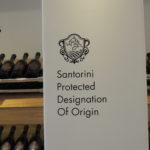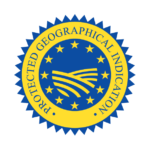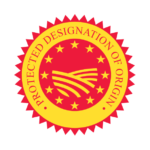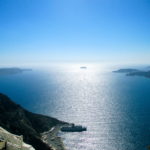Lately when you talk about Greece, the discussion inevitably comes back to the political unrest and economic issues, but after spending four weeks teaching English in Crete all I can say is economy, schmonomy. It was amazing how different island life is in comparison to what is being said.
 The people were so friendly (the only way to offend was to not accepts the food or gifts offered to you) and the lifestyle was relaxed, with flowing wine and long siestas.
The people were so friendly (the only way to offend was to not accepts the food or gifts offered to you) and the lifestyle was relaxed, with flowing wine and long siestas.
Most island-dwellers were almost offended by the broad-stroke and misleading press coverage of the problems of the mainland. Anyways, who has time to think about revolutions with the beach so close?
When I got off the plane in Chania, Crete I was immediately in awe of the surrounding mountains, their highest peaks hidden by clouds. I was in even more awe when I was exposed to the blasé attitude the locals had towards, not only the mountains, but the mind-blowing blue of the Mediterranean Sea— water that was so clear it was difficult to distinguish three feet to the bottom from thirty.
Although if you told me your life-long dream was to get sprayed by ceaseless pounding flow of Niagara Falls, I’d probably roll my eyes as well.
Not only i s Crete beautiful, but it is very self-sufficient. Most of its products are produced, processed, and prepared in specific areas of the island, giving them Protected Designation of Origin status.
s Crete beautiful, but it is very self-sufficient. Most of its products are produced, processed, and prepared in specific areas of the island, giving them Protected Designation of Origin status.
The European Union also allots for products that are produced, processed, or prepared in certain areas of the continent with its Protected Geographical Indication label.
Wine seems to be in the forefront of these schemes. The EU makes up 45% of the world’s grape-growing areas, 65% of global wine production, 57% of global consumption, and 70% of wine exports worldwide.
In Crete, and its surrounding islands, the wines that I saw and tasted tended to prominently display their PDO or PGI status.

In America our system is very different, but like the EU it has a policy that gives concessions for the geographical labeling of wine. The laws are set up so that if you are drinking a wine with Napa Valley in the name, you sure as hell know where those grapes are coming from and where that wine was produced and bottled.
What made me look into the EU standards was the prevalence of “table wine.” At every restaurant there would be a half-liter of wine for four or five euros that the waiters assured me was produced where I was staying. However, there was no PDO or PGI label, nor is there any geographic indicator in the name “table wine.”
Further investigation found that the EU has two tiers of wine quality:
- the first, Quality Wines Produced in a Specific Region, is made up of PDO and PGI certified wines; and
- the second and lower is Table Wines. The table wines I encountered probably met some of the EU standards for certified geographical production, but not all.
And that isn’t to say table wine is anything to frown at! In Crete, you still clink glasses with an enthusiastic “Yamas!” just the same. The real drinks you should be worried about are the after-dinner shots of ouzo.









